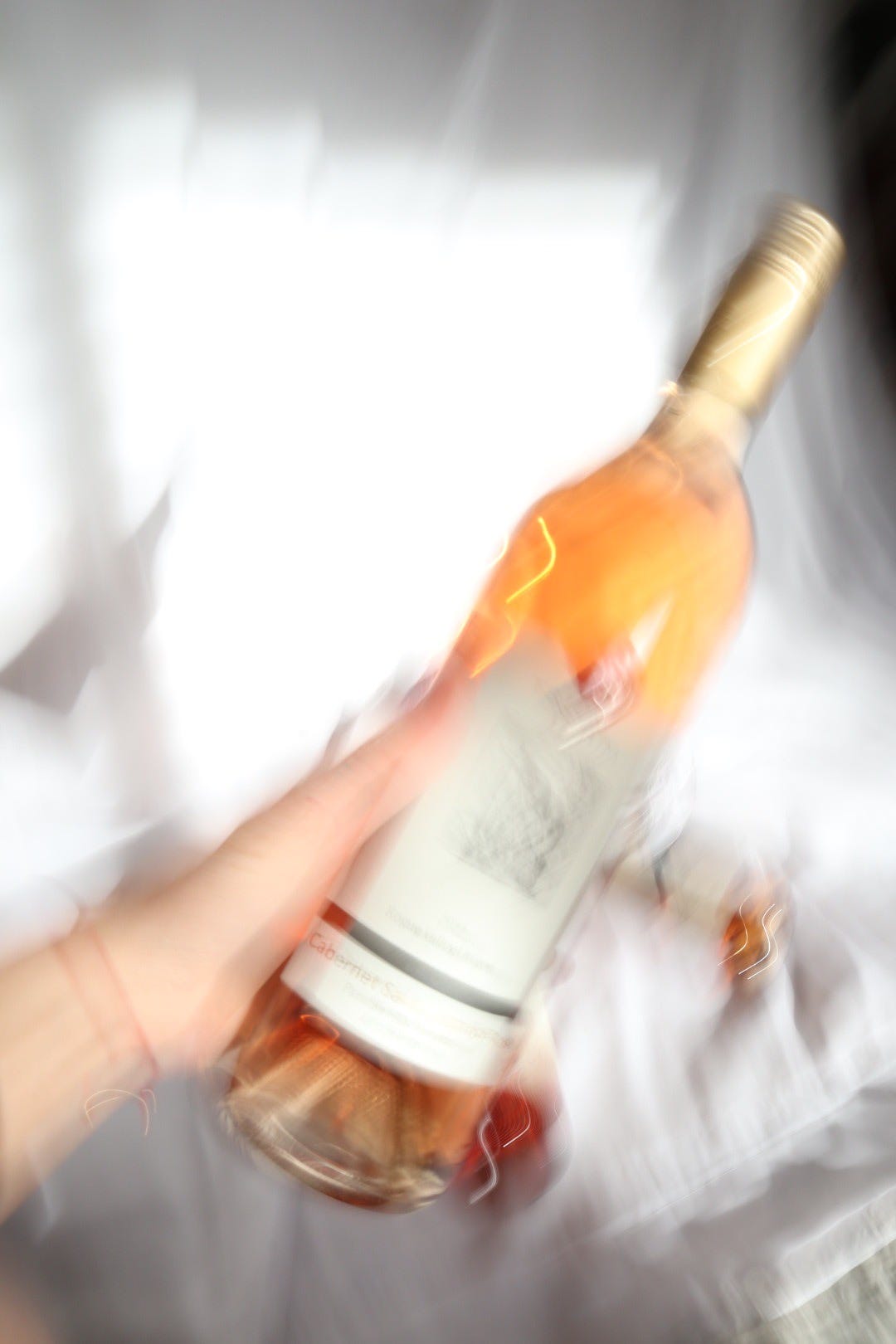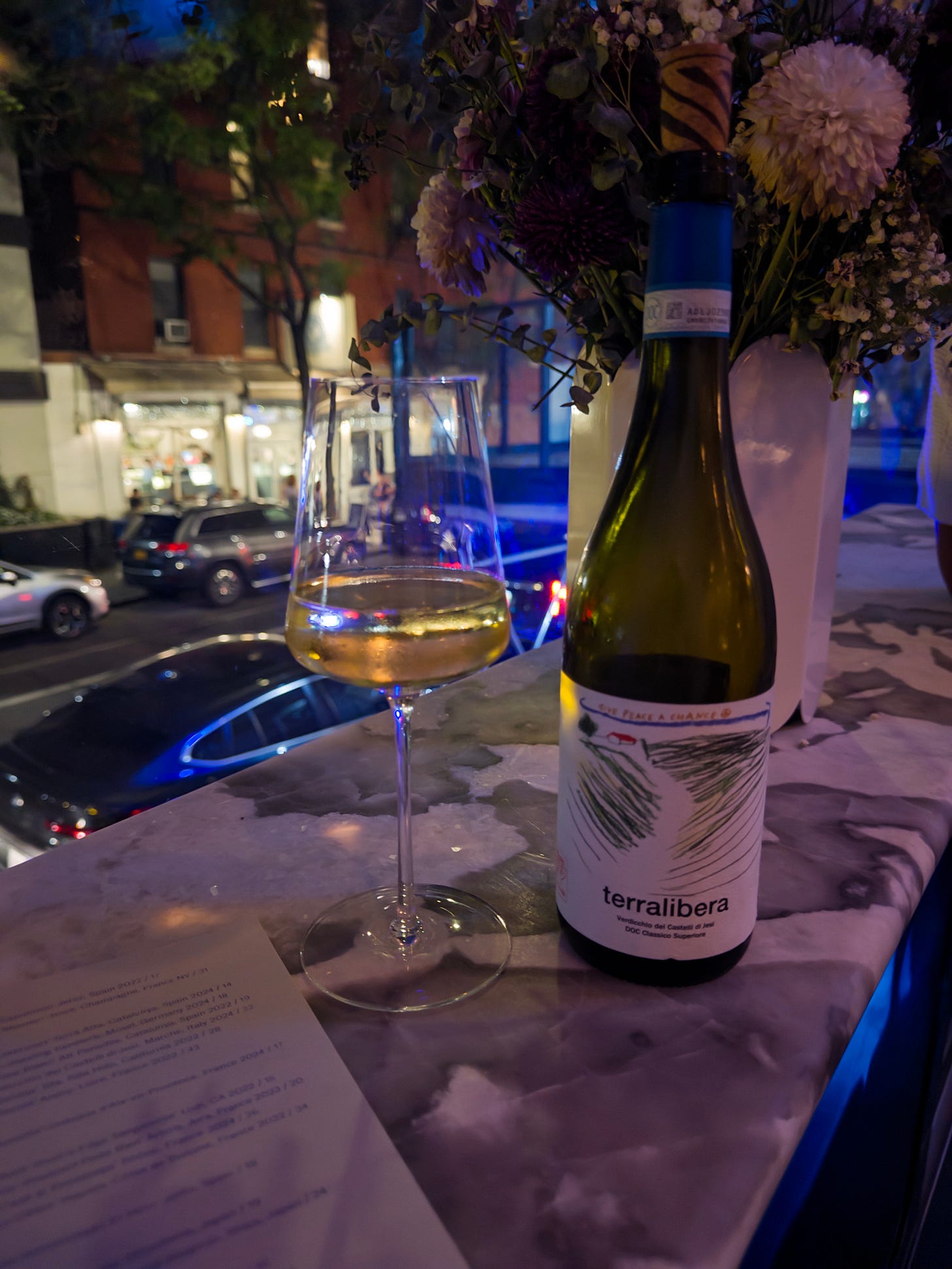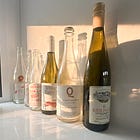How to know if a wine is sweet or not
This is the #1 question I’m asked as a sommelier.
No matter the context—whether I’m helping a customer pick out a bottle at the shop or leading a tour at the winery I’m now at part-time—one of the most common questions I get is “is this wine sweet?”
As a sommelier, this type of question can feel rather complicated. In truth, a wine that is categorized as “sweet” is technically a true sweet wine, which means a wine has leftover residual sugar after fermentation.
A brief lesson on fermentation: when yeast is added to the juice after harvesting and pressing the grapes, the yeast in the juice eats the sugars and converts them to alcohol. Residual sugar is leftover in the grape juice if that fermentation process is halted. This can happen in two different ways:
Fermentation is halted by adding sulfur and/or cold stabilization, resulting in a sweet wine.
Fermentation is halted by adding a spirit, like a grape brandy, resulting in a fortified wine.
But…what if a wine that is technically “dry” still tastes sweet to some people? Is it actually sweet, or is it all in your head?
Why a dry wine can still taste sweet
Wines can have different characteristics based on where they came from. Specifically, where the grapes are grown.
If grapes are grown in a warmer climate, the fruit will get ripe, resulting in more sugars for the yeast to eat and a higher alcoholic product. These types of grapes typically are the kind known for being more “fruit forward,” which is essentially means the wine’s aromas are likely going to taste fruitier instead of crisp and mineral, which is what you get from cooler climate grapes.
Technically the wine is still dry. A wine that has less than four grams of residual sugar per liter is considered a dry wine. That small amount of sugar is natural and not added, again, coming from the grape juice originally.
As a somm, I call this the “perception of sweetness.” If a customer asks me if something is sweet, I will use the term “fruit forward” if it applies to that wine. I’ll ensure that while the wine doesn’t have any residual sugar, it may have the “perception of sweetness” because of the flavor.
You’ll see this with wines coming from those warmer climates. White wines will give off stone fruit and tropical fruit aromas, while red wines will give more warm berries, plums, and if the wine aged in oak, a vanilla and chocolate character.
Plus, alcohol is inherently sweet, even thought it does leave a slight burn in the throat and the belly. A wine that is higher in alcohol may have that perception of sweetness as well. Again, you’ll see this happening in warmer climates.
What to look for if you’re looking for a “fruit-forward” wine or a true sweet wine.
If you’re looking for a true sweet wine…
Check the alcohol percentage. If the alcohol percentage is less than 10% or higher than 16%, it likely has sweetness. If you see a wine on the shelf that has a lower or higher alcohol percentage, don’t be afraid to ask the associate if it has residual sugar.
Check for sweetness levels on the label. Some regions get specific on the levels of sweetness in their labels.
For example, in Germany, any white wines that don’t have “Trocken” on the label mean that they will have a level of sweetness. “Trocken” means dry in German, so if you see it, you can trust that the wine will contain minimal to no residual sugar.
Another example: If you’re grabbing a sparkling wine, whether it’s Champagne or a Crémant or even a Cava, look to see if it says “Brut.” This means the wine sits on the drier side compared to other sparkling wines. Yes, an “Extra Dry” wine is technically considered sweeter than a Brut, Extra Brut, or Brut Nature.
Check to see if the residual sugar is listed. Some labels may include the level of residual sugar on their back labels, so if you see a wine that has more than 4 grams of residual sugar (< 4 g/L), then it will lean on the sweeter side.
If you’re looking for a fruit forward wine…
Check where the wine came from. If the wine is coming from a warmer climate (like southern areas in France, Italy, Spain, Portugal, USA, etc.) then you can expect the wine to have more fruit character and alcohol, giving it that “perception of sweetness” as I like to say.
Check the varietal. The grape also matters for a wine tasting fruity or not. Chardonnay and Sauvignon Blanc can get really fruit in a warm climate, with lots of tropical fruit notes. Gewurtztraminer is famously known for having strong aromas of lychees and roses. Grenache can get very berrylicious in the southern Rhône, and Zinfandel (aka Primitivo) is known for being soft and full of black fruit notes.
Questions to ask the sommelier next time you’re shopping for a dry or sweet wine.
Instead of asking if the wine is sweet, don’t be afraid to get more specific and ask…
Does this wine have residual sugar?
Is this wine more crisp and mineral, or more fruit forward?
Did this wine come from a cooler or warmer climate?
What is the alcohol percentage?
Hope this helps. 😊
Wine of the week
I enjoyed the lovelies, crispy white wine at Penny while waiting for my table downstairs at Claud, an NYC mecca for wine lovers. This is Terralibera, Verdicchio dei Castelli di Jesi 'Insieme' 2024 from Marche, Italy. The grape is Verdicchio.
Tasting notes:
Appearance: Green yellow, pale, clear
Nose: Yellow flowers, buttercup, white peach, lemon zest, no oak
Palate: High acidity, light body, medium alcohol, no oak, long length
My conclusion: Green, fresh, crisp, fruity. A great alternative for our Sauvignon Blanc lovers.








Great read and super helpful - especially the note about Riesling. It's such a versatile varietal that can be expressed in many ways. Great tips for the wine curious! Thank you for sharing.